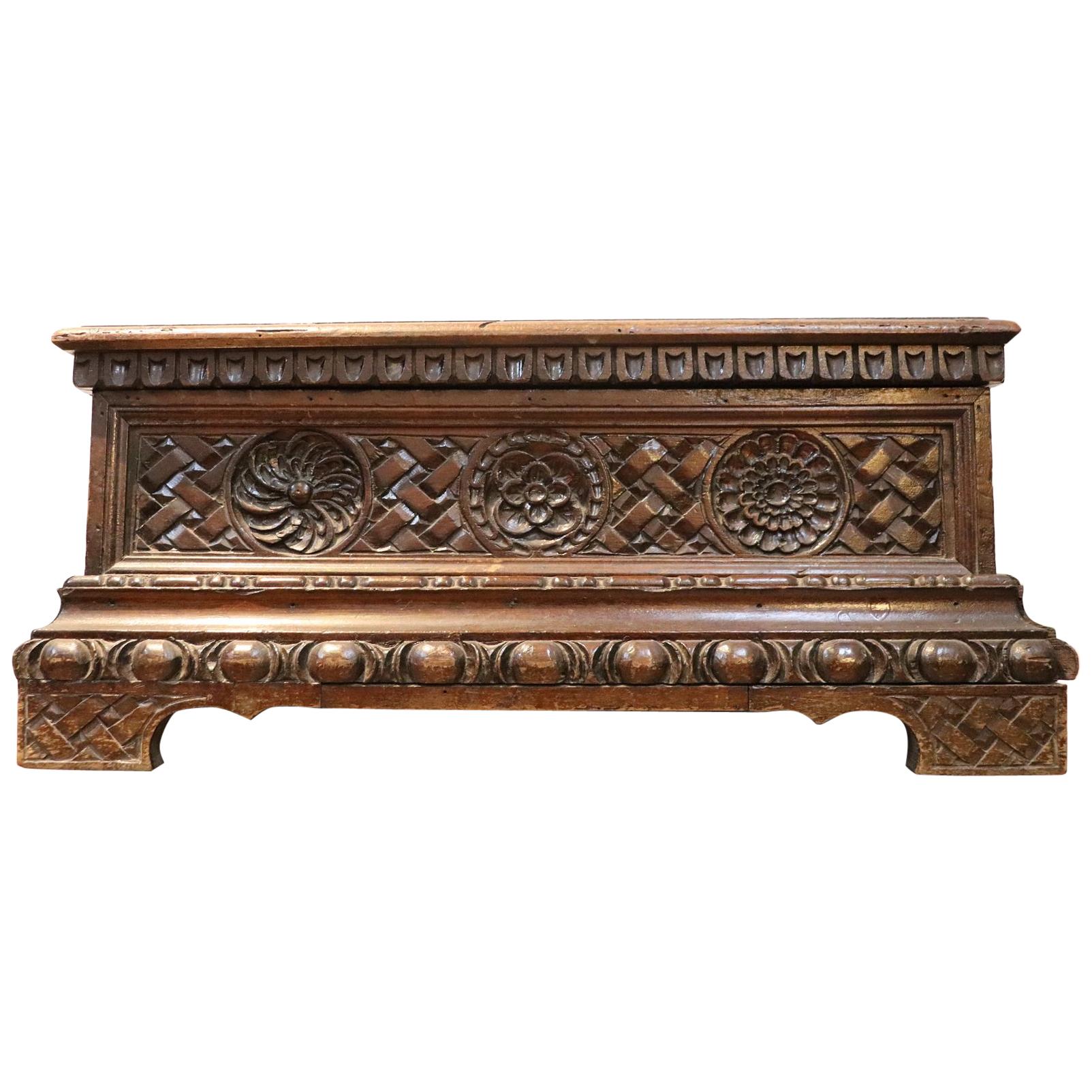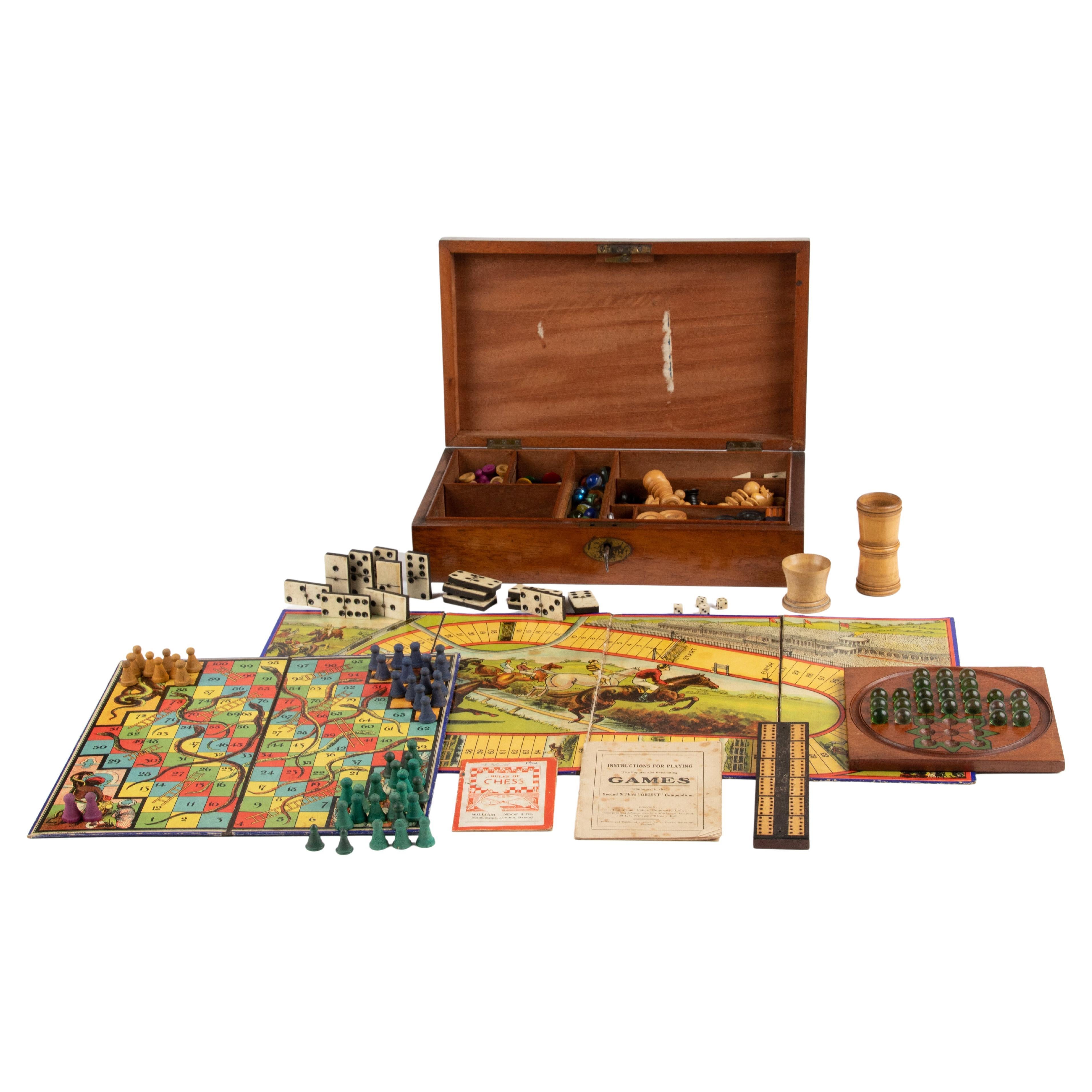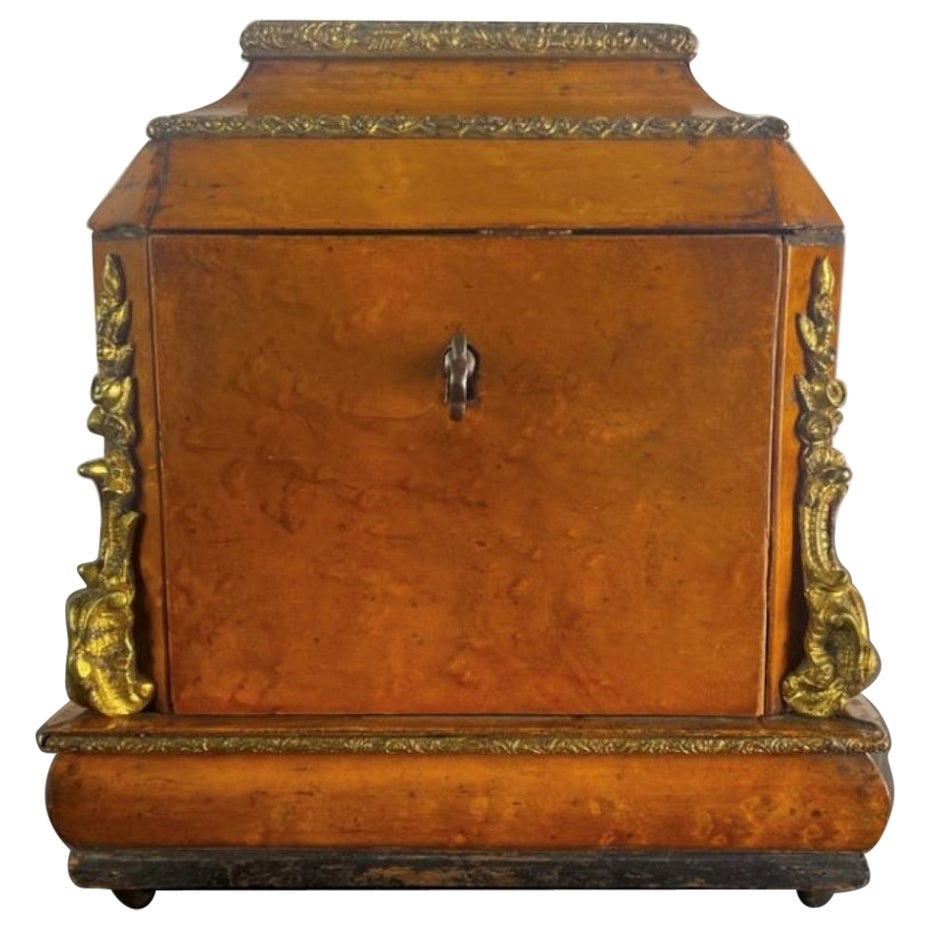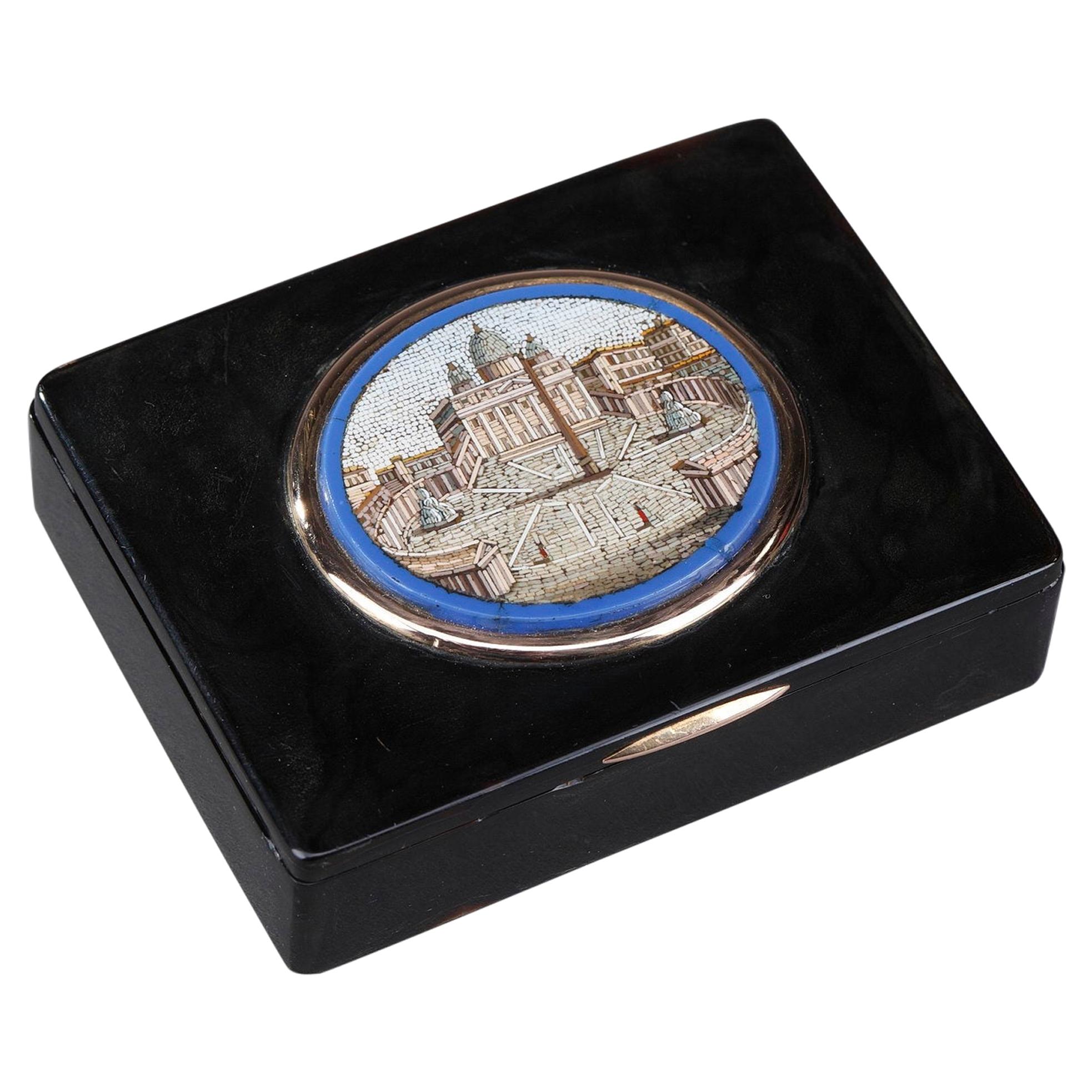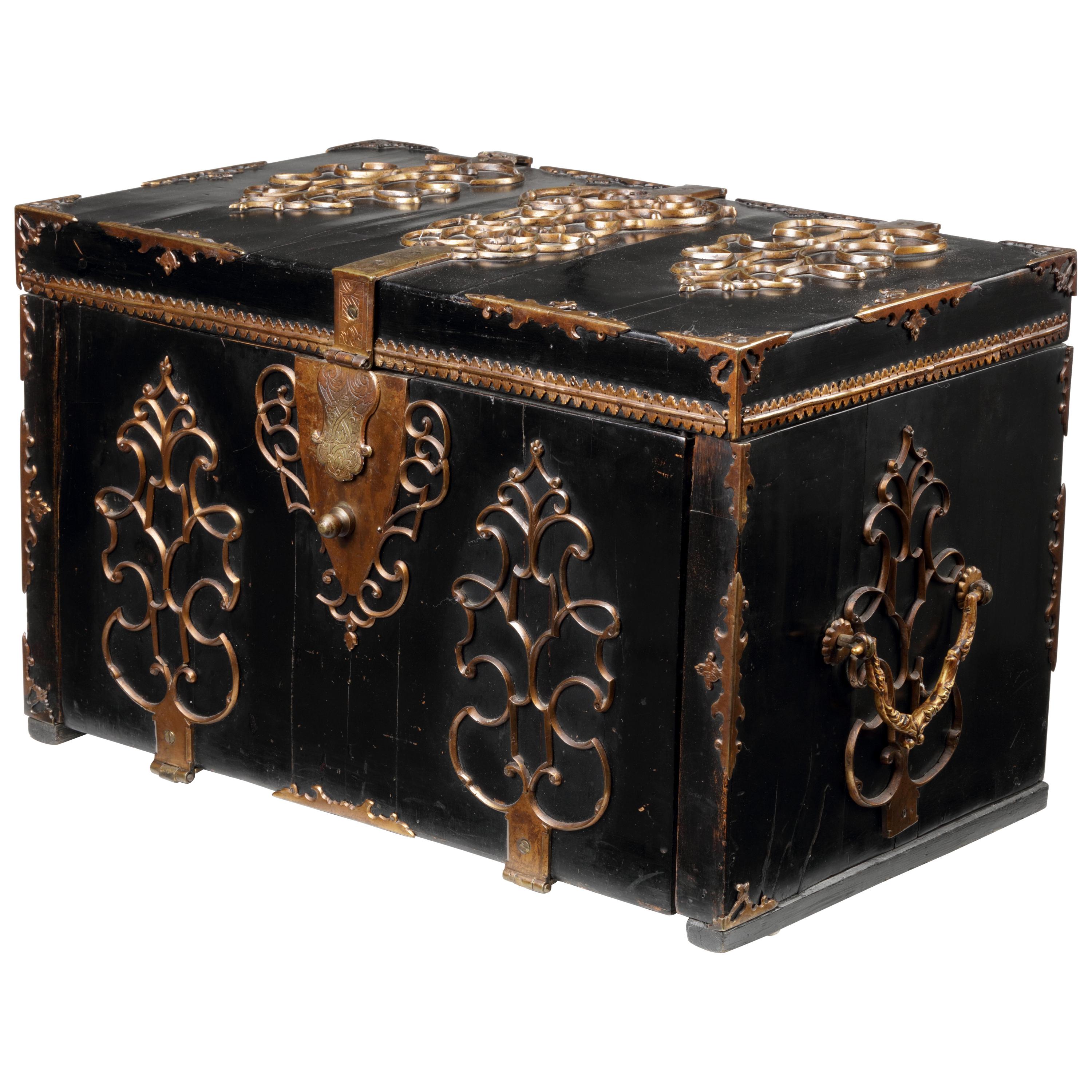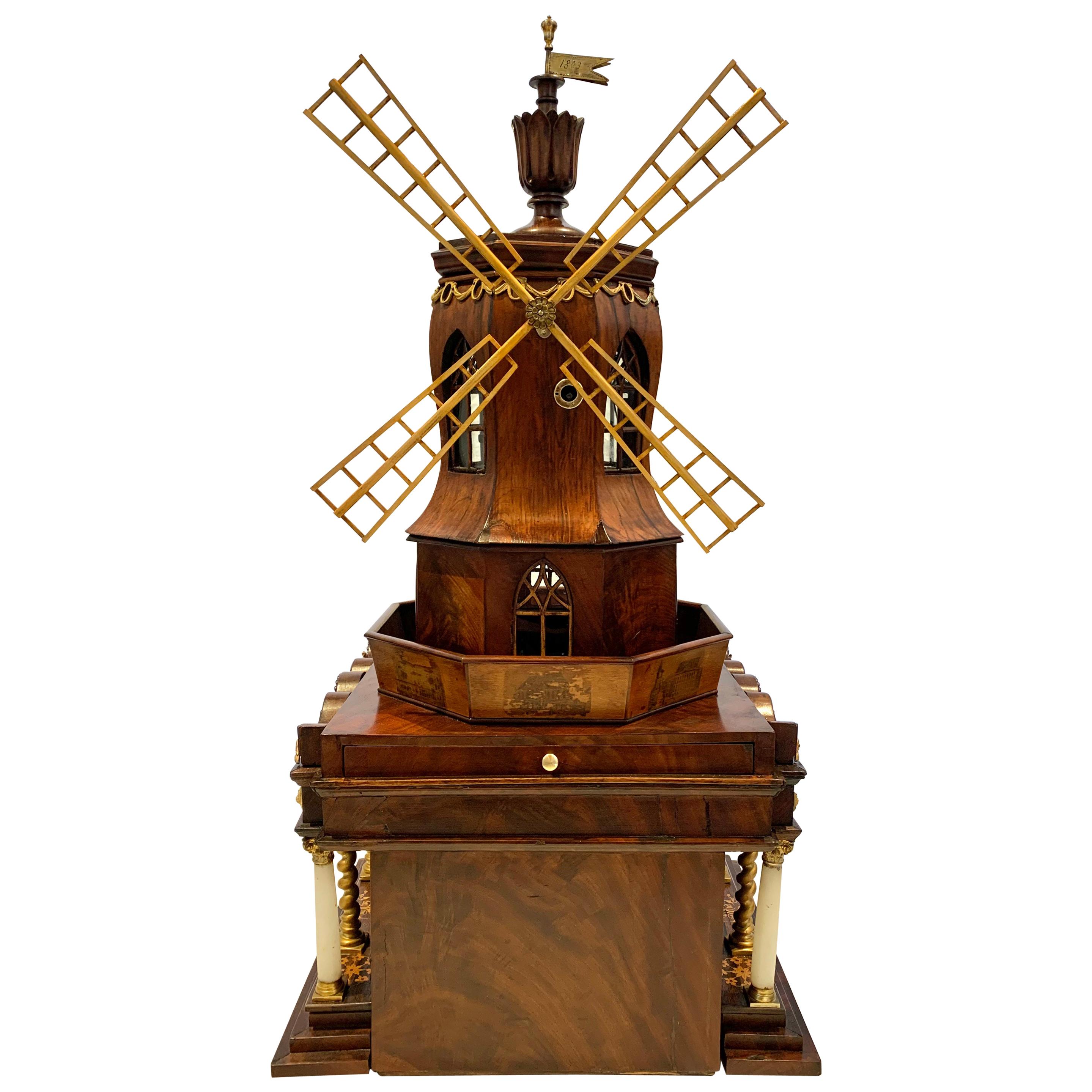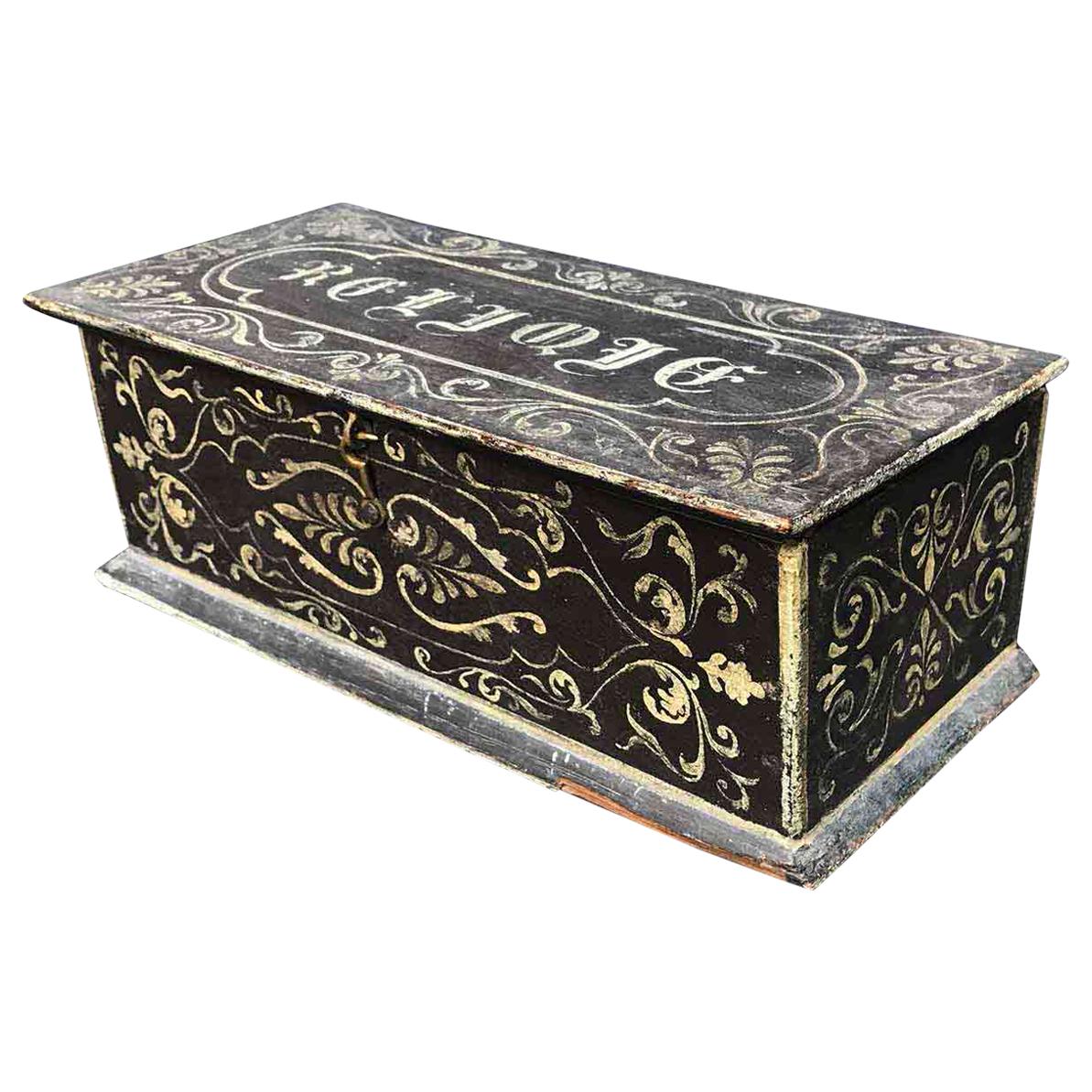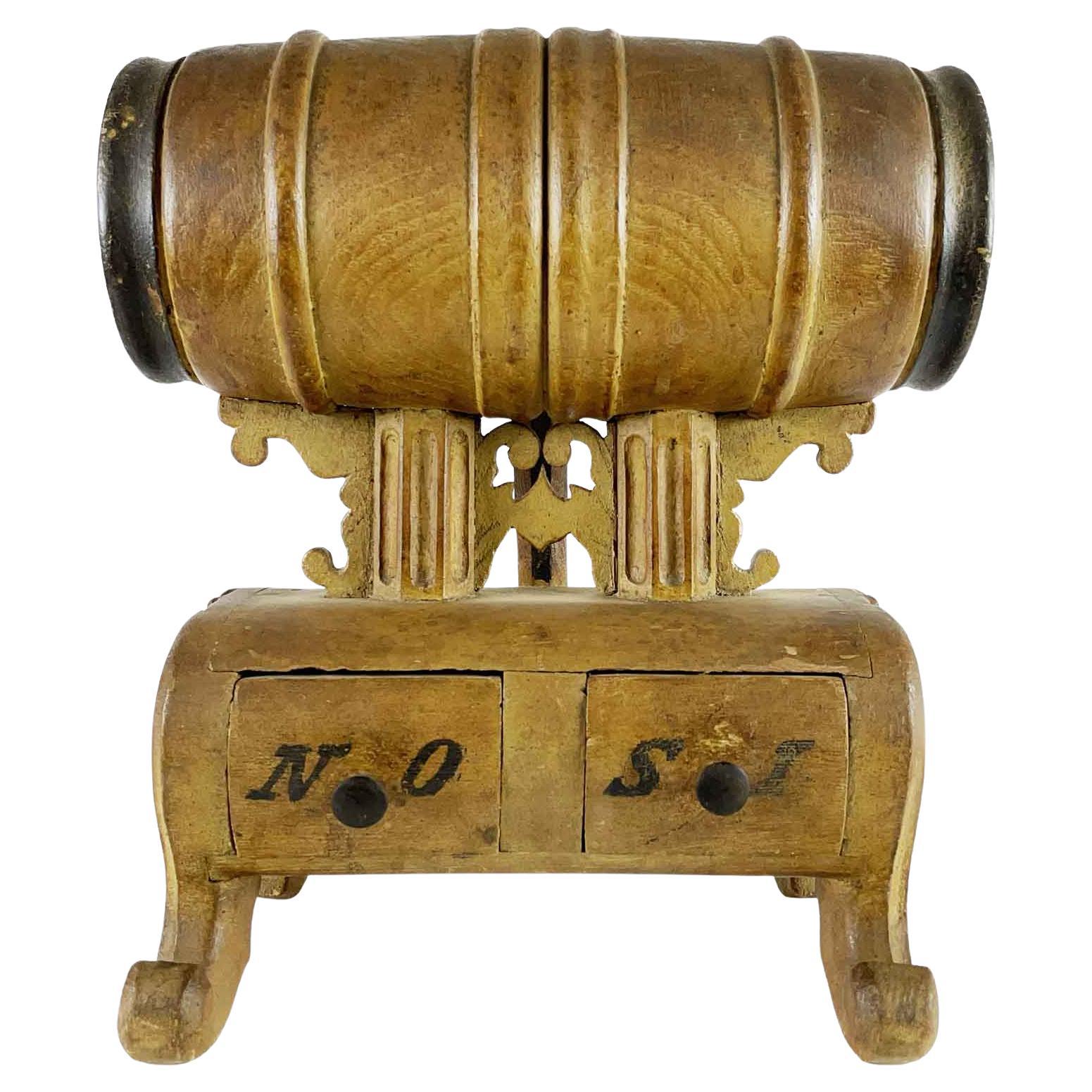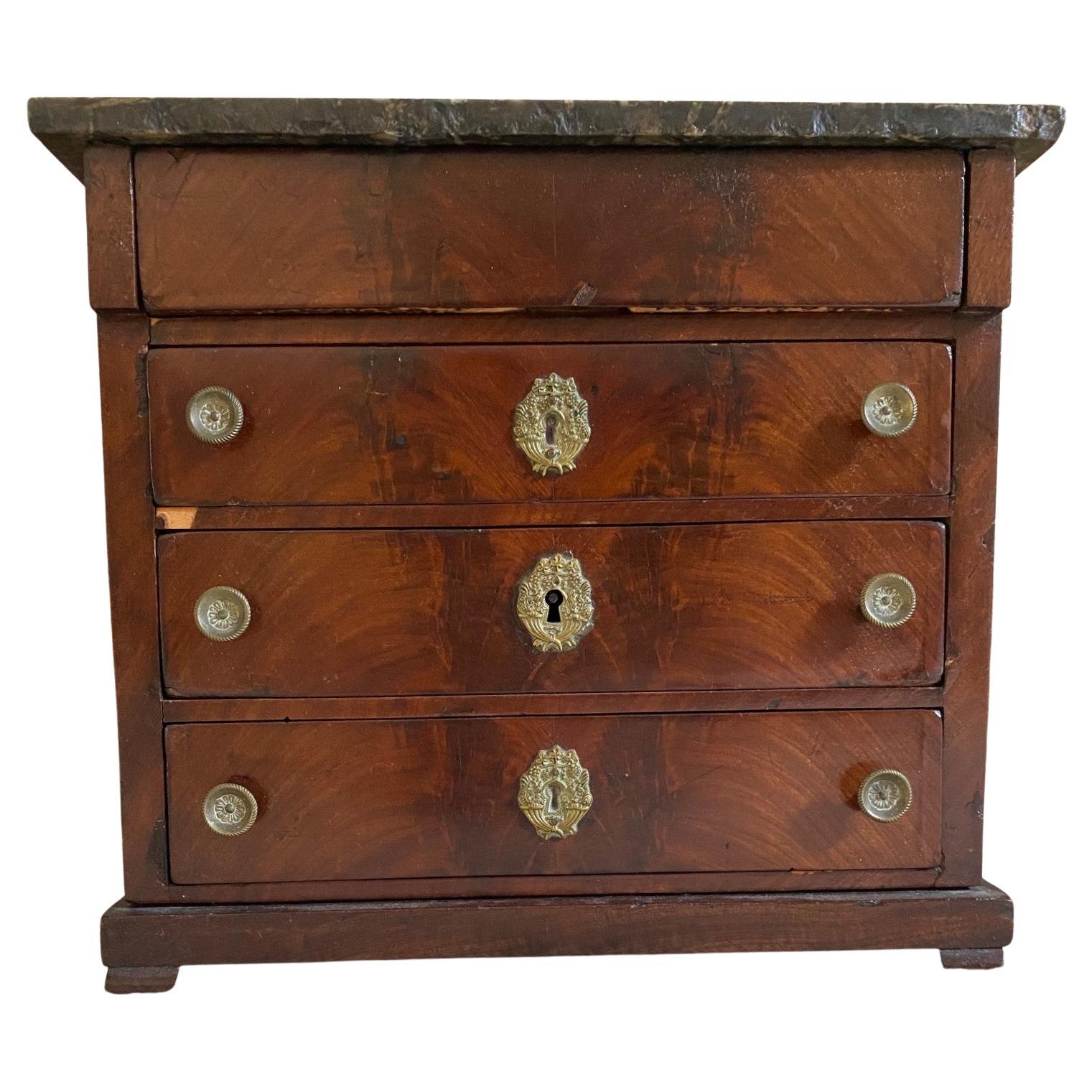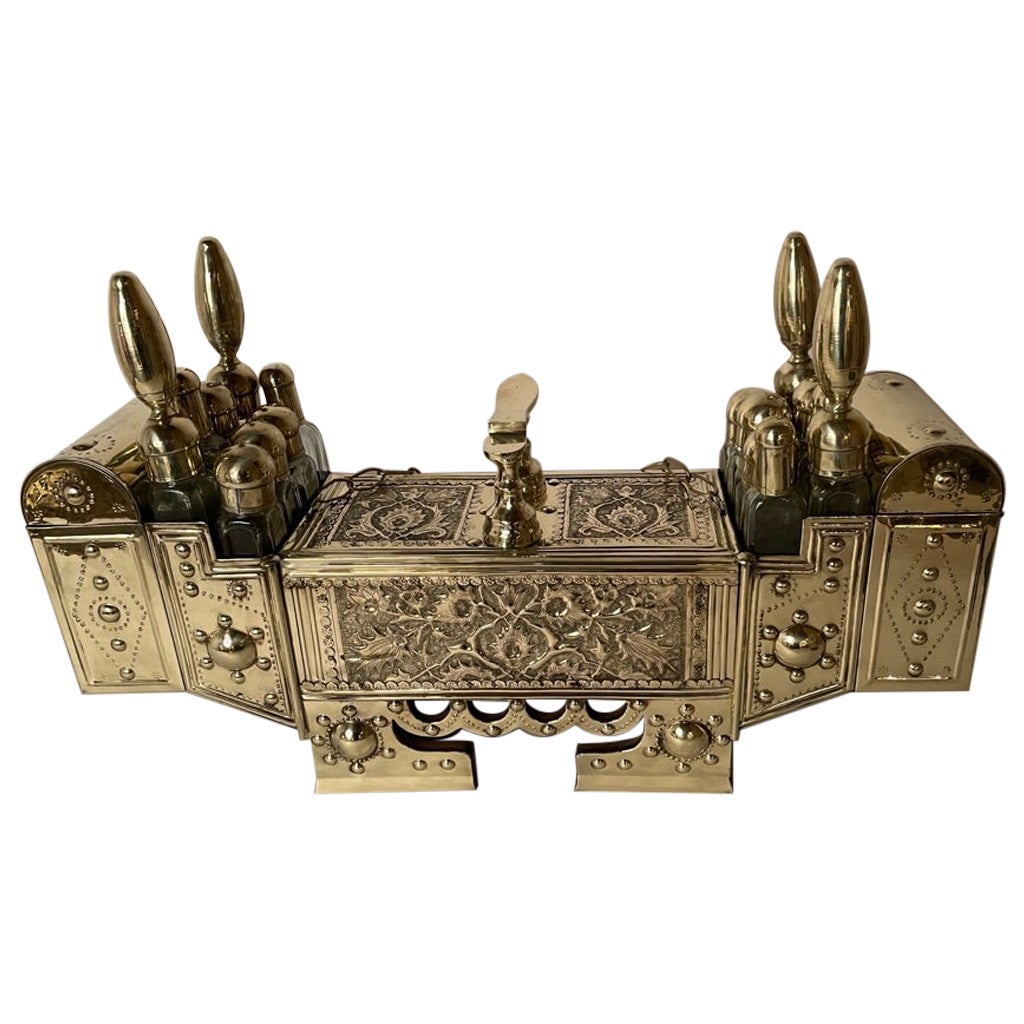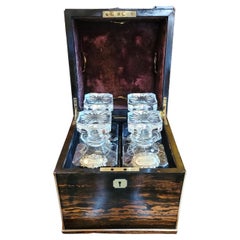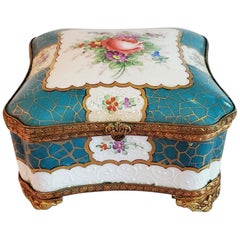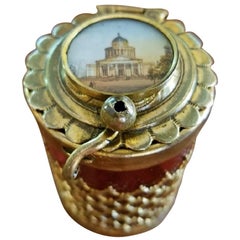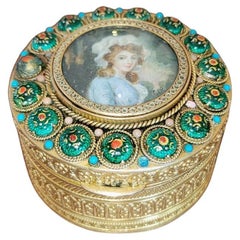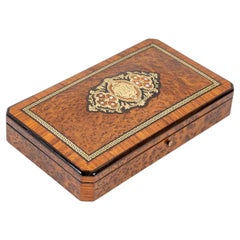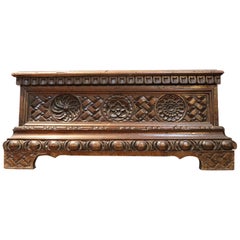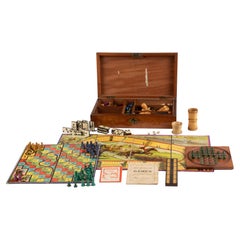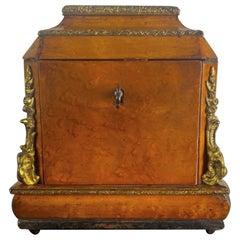
19th Century Campaign Candle Box or Chest on Stand by J. Bramah
View Similar Items
Want more images or videos?
Request additional images or videos from the seller
1 of 18
19th Century Campaign Candle Box or Chest on Stand by J. Bramah
$1,855List Priceper set
About the Item
- Creator:Joseph Bramah (Maker)
- Dimensions:Height: 21.25 in (53.98 cm)Width: 19.25 in (48.9 cm)Depth: 12.5 in (31.75 cm)
- Sold As:Set of 2
- Style:Campaign (Of the Period)
- Materials and Techniques:
- Place of Origin:
- Period:
- Date of Manufacture:1810-1815
- Condition:Wear consistent with age and use. Very good original condition. One very small crack to the right rear corner of the box.
- Seller Location:Dallas, TX
- Reference Number:1stDibs: LU3978117195971
About the Seller
4.9
Vetted Professional Seller
Every seller passes strict standards for authenticity and reliability
Established in 2015
1stDibs seller since 2018
389 sales on 1stDibs
Typical response time: 1 hour
Authenticity Guarantee
In the unlikely event there’s an issue with an item’s authenticity, contact us within 1 year for a full refund. DetailsMoney-Back Guarantee
If your item is not as described, is damaged in transit, or does not arrive, contact us within 7 days for a full refund. Details24-Hour Cancellation
You have a 24-hour grace period in which to reconsider your purchase, with no questions asked.Vetted Professional Sellers
Our world-class sellers must adhere to strict standards for service and quality, maintaining the integrity of our listings.Price-Match Guarantee
If you find that a seller listed the same item for a lower price elsewhere, we’ll match it.Trusted Global Delivery
Our best-in-class carrier network provides specialized shipping options worldwide, including custom delivery.More From This Seller
View All19C Irish Coromandel Wood Campaign Decanter Box
Located in Dallas, TX
PRESENTING A STUNNING 19C Irish Coromandel Wood Campaign Decanter Box.
STUNNING mid-Victorian Decanter box from circa 1860-1880.
Made in Dublin...
Category
Antique 19th Century Irish Campaign Decorative Boxes
Materials
Crystal, Silver, Brass
$4,250 / set
19th Century Samson Paris Porcelain Trinket Box
By Samson & Cie
Located in Dallas, TX
Presenting a gorgeous French 19th century Samson Paris Porcelain Trinket Box probably by Edme Samson.
Marked on the base with “Made in France” and unmistakably in the style and manner of Samson.
The lid features hand painted floral bouquets on an ivory porcelain background with gold edging, surrounded by a sky blue lid with gold web or crackling effect.. The lid is hinged and the lid and base are edged in floral gilt metal mounts with Fleur De Lis clasp. It sits on 4 gilt metal or ormolu feet. The sides are likewise hand decorated.
This wonderful antique hand painted box is just bursting with History. Inspired by Edme Samson of Samson & Co., Paris. we believe (based upon the markings and natural aging) that it was made between 1880– 1890 in France and was meant to resemble an antique of a much earlier period. It is very similar to Sevres pieces with it’s color, decoration and design.
Samson specialized in reproducing antiques from the 1600 and 1700s. One of his most interesting works was his Heraldic or Armorial pieces. With this medium sized box, he was not only copying the larger porcelain caskets or coffin boxes...
Category
Antique Late 19th Century French Louis XVI Jewelry Boxes
Materials
Ormolu
19th Century Italian Ruby Glass Box with Miniature of Basilica
Located in Dallas, TX
Lovely little 19th century ring jar or pill box made of a thick wine colored ruby glass.
It has a miniature of a Basilica on top, gilt metal mounts with beautiful filigree on the si...
Category
Antique Early 19th Century Vatican Grand Tour Decorative Boxes
Materials
Metal
Early 19th Century French Gold Box with Enamel and Miniature Portrait
Located in Dallas, TX
PRESENTING A STUNNING Early 19C French Gold Box with Enamel and Miniature Portrait.
Box made with brass but has been plated with 18ct Gold with beau...
Category
Antique Early 19th Century French Grand Tour Jewelry Boxes
Materials
Gold, Enamel
19th Century Anglo-Indian Spice or Tea Caddy with Silver Mounts
Located in Dallas, TX
PRESENTING A GORGEOUS 19C Anglo Indian Rosewood Caddy with Silver Mounts.
Really nice and unusual, 19th Century Anglo-Indian Spice or Tea Caddy, from cir...
Category
Antique Late 19th Century Indian Anglo Raj Tea Caddies
Materials
Sterling Silver
Rare 19th Century English Tunbridgeware Hair Pin or Slide
Located in Dallas, TX
PRESENTING an EXTREMELY UNIQUE and RARE 19C British Tunbridgeware Hair Pin/Bobbin or Slide.
This slide is unlike any of it’s kind we have seen before, it is a VERY RARE survivor.
From circa 1860 – 80 and made in Tunbridge Wells, England.
Made of walnut with gorgeous marquetry inlay on the entirety of the front with classic Tunbridgeware micro-mosaic all over the front. The rear is walnut.
The marquetry inlay appears to be various different woods, namely, maple, walnut and satinwood.
Would have been worn in a Lady’s hair bun with the micro-mosaic facing forward.
This would have belonged to a VERY ELEGANT LADY in the mid to late 19th Century.
Tunbridge ware is a form of decoratively inlaid woodwork, typically in the form of boxes, that is characteristic of Tonbridge and the spa town of Royal Tunbridge Wells in Kent in the 18th and 19th centuries. The decoration typically consists of a mosaic of many very small pieces of different coloured woods that form a pictorial vignette. Shaped rods and slivers of wood were first carefully glued together, then cut into many thin slices of identical pictorial veneer with a fine saw. Elaborately striped and feathered bandings for framing were pre-formed in a similar fashion.
There is a collection of Tunbridge ware in the Tunbridge Wells Museum and Art Gallery in Tunbridge Wells.
The famous makers of Tunbridge ware were in the Tunbridge Wells area of Kent; their most notable work was from circa 1830-1900.
Early makers of Tunbridge ware, in Tunbridge Wells in the mid-18th century, were the Burrows family, and Fenner and Co. In the 19th century, around 1830, James Burrows invented a technique of creating mosaics from wooden tesserae. Henry Hollamby, apprenticed to the Burrows family, set up on his own in 1842 and became an important manufacturer of Tunbridge ware, employing about 40 people.
Edmund Nye (1797–1863) and his father took over the Fenner company when William Fenner retired in 1840, after 30 years in partnership with him. Thomas Barton (1819–1903), previously apprenticed at the Wise factory, joined the Nyes in 1836, and worked as Nye’s designer; he took over the business in 1863 and continued there until his death.
In Tonbridge (near to Tunbridge Wells), George Wise (1703–1779) is known to have had a business in 1746. It continued with his son Thomas, and Thomas’s nephew George (1779–1869), who took over in 1806. In its early years the company made articles such as workboxes and tea caddies with prints of popular views; later items had pictures created from mosaics. Their workshop in Tonbridge, Wise’s Tunbridge Ware Manufactory, was next to the Big Bridge over the Medway; the building was demolished in 1886 to widen the approach to the bridge.
Tunbridge ware became popular with visitors to the spa town of Tunbridge Wells, who bought them as souvenirs and gifts. Articles included cribbage boards, paperweights, writing slopes, snuffboxes and glove boxes.
At the Great Exhibition of 1851, Tunbridge ware by Edmund Nye, Robert Russell and Henry Hollamby was shown; Edmund Nye received a commendation from the judges for his work. He exhibited a table depicting a mosaic of a ship at sea; 110,800 tesserae were used in making the picture.
The manufacturers of Tunbridge ware were cottage industries, and they were no more than nine in Tunbridge Wells and one in Tonbridge. The number declined in the 1880s; competent craftsmen were hard to find, and public tastes changed. After the death of Thomas Barton in 1903 the only surviving firm was Boyce, Brown and Kemp, which closed in 1927.
Marquetry was an old technique which was continued by Nye and Barton to create images such as birds or butterflies.
‘Green Oak’ as caused by the fungus Chlorociboria aeruginascens.
Stickware and half-square mosaic was invented by James Burrows in about 1830: a bunch of wooden sticks of different colours, each having triangular or diamond-shaped cross section, were tightly glued together; in the case of stickware, the resulting block was dried, then turned to form an article such as the base of a pincushion. For half-square mosaic, thin slices were taken from the composite block, and applied to a surface.
Tesselated mosaic, was a development by James Burrows of half-square mosaic; it was adopted by George Wise and Edmund Nye. Minute tesserae were used to form a wide variety of geometric and pictorial designs.
Many sorts of wood were used for the various colours; about 40 were in regular use. Only natural colors were used; green was provided by “green oak”, produced by the action of fungus on fallen oak. Designs for articles were often taken from designs of Berlin wool work.
Category
Antique Late 19th Century English High Victorian Collectible Jewelry
Materials
Satinwood, Walnut
You May Also Like
Game Box, 19th Century
Located in Saint-Ouen, FR
Game box, 19th century.
Napoleon III period game box, 19th century in precious wood marquetry.
Measures: H: 5 cm, W: 22 cm, D: 13 cm.
Category
Antique 19th Century French Napoleon III Decorative Boxes
Materials
Wood
$1,553
19th Century Italian Renaissance Walnut Carved Miniature Blanket Chest or Coffer
Located in Casale Monferrato, IT
Rare and fine quality 19th century Italian Renaissance walnut carved miniature blanket chest or coffer. Fine carving in walnut wood on the fron...
Category
Antique 1830s Italian Renaissance Models and Miniatures
Materials
Wood
Late 19th Century English Game Box
Located in Casteren, Noord-Brabant
Lovely antique game box, made of mahogany.
The box contains several games, with many bits and pieces. Not all complete.
It is obviously that there h...
Category
Antique 1890s British Belle Époque Games
Materials
Wood
Jewelry Boxes or Wooden Box with Key, Restauration Period 19th, France
Located in Beuzevillette, FR
Charming jewelry box or case.
The box has a compartment for rings and 3 compartments for earrings, necklaces, bracelets, stones.
Very interesting opening mechanism with pusher syst...
Category
Antique Mid-19th Century French Restauration Jewelry Boxes
Materials
Wood
19th Century Restauration Snuff Box with Micromosaic
Located in Paris, FR
Small rectangular Restauration snuff box crafted in gold. The hinged lid is decorated with an oval micromosaic representing St. Peter's Square in Rome. Micromosaic is set in a gold s...
Category
Antique Early 19th Century French Charles X Tobacco Accessories
Materials
Gold
Ebony Veneered Captain's Chest or Strong Box 'Coffre Fort', 17th Century
Located in Amsterdam, NL
A strongbox was a type of travelling chest and these types of boxes were more common in England than anywhere else where they were fabricated between 1660 and 1720. The earliest proo...
Category
Antique Late 17th Century Dutch Dutch Colonial Decorative Boxes
Materials
Brass
Recently Viewed
View AllMore Ways To Browse
Tiger Sofa
Bramah Lock
Candle Boxes
Antique Bramah Lock
Campaign Sofa
Tiger Oak Side Tables
19th Century Campaign Chest Box
Tiger Oak Box
Book Boxes
Coromandel Box
Mosaic Inlaid Box
Brass Bound Box
Carved Mother Of Pearl Shell
Middle Eastern Inlay
Writing Slope Box
Black Forest Carved Box
Antique Box Scottish
Antique Dutch Silver Boxes

